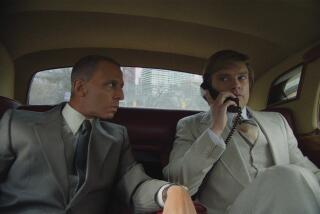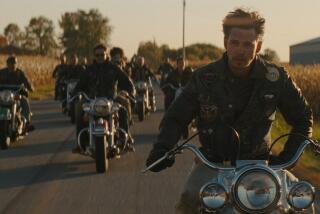How Danny Strong made ‘The Butler’ speak out on civil rights stories
- Share via
“I want to tell the story of the civil rights movement,” I said. The late, great film producer Laura Ziskin looked at me and said, “Which part?” “All of it.”
Many people in our business would’ve immediately explained why telling such a vast story would never work as a film, but Laura was a fearless producer who simply responded: “Sounds great. So how would you do it?”
The script for “The Butler” began as a beautiful Washington Post profile written by Wil Haygood about White House butler Eugene Allen. Laura brought me the article after she optioned it, and I instantly knew it could be the spark for a very special film. The conceit of taking the audience into any room in the White House at any point in our history was a rich dramatic device.
However, there were also many obstacles in translating it to a movie. The film would take place over many decades, and the journey through long periods of time tends to undercut drama and tension in a screenplay. The second major problem was that the protagonist was a passive character whose goal in life is to be invisible when he is in a room. Not your typical Hollywood movie hero.
Unsure I was even going to be able to pull it off, I started researching U.S. history from the 1950s to 1980s (the years of Allen’s service) to see if it sparked any ideas. There were so many fascinating events to dramatize, however, I kept being drawn back into the powerful stories of the civil rights movement.
Reading about the violence that white Americans were inflicting on their fellow countrymen, and the decision by African American (and some white) activists to fight hate with love, was as moving as any subject I had ever studied. Frustrated that these landmark events weren’t a part of our national psyche the way World War II or the Holocaust or Watergate were, I decided I wanted to use the character of a White House butler to tell the true story of the civil rights movement. But I still had no idea how I was going to do it.
PHOTOS: Going back in time with costumes from ‘The Butler’
The next key (and what turned out to be crucial) decision was to give the butler a son who was a civil rights activist. I did this so I could have scenes take place at the civil rights battles instead of keeping the film confined to the White House. This simple idea brought the entire narrative structure together because it created a plot in which the butler is trying to get his son out of the movement while the presidents are dealing with the violent events that the butler’s son is at the center of.
Since the father-son storyline was going to be fictionalized (so much so that the Writers Guild classified the script as an original screenplay instead of an adaptation), I felt the need to change the name of the butler to make it clear I was not telling Eugene Allen’s true-life story. Thus Cecil Gaines was born. Since Cecil was not going to support the actions of his Freedom Rider son, the name comes from the idea that he “ceases to gain” equal rights. In many ways, his arc is overcoming his own name.
Writing sequence after sequence was extremely emotional for me, as I was deeply moved by these tumultuous chapters of U.S. history. One of my favorite moments is the sit-in sequence in which the son can’t get served at a lunch counter even as his father is serving the president of the United States. For me, this perfectly embodied everything the movie was trying to say, and I remember when I was writing the sequence, it was the first time I felt that the premise of a father-son narrative to tell the larger civil rights story might actually work.
The biggest payoff to this approach came after a pre-release screening when an elderly woman whispered in my ear, “I was a Freedom Rider, and no one has ever thanked me before.” Hearing this brought tears to my eyes since I had written the film as a love letter to the heroes of the civil rights movement whose only goal was to make America a more perfect union.
More to Read
Only good movies
Get the Indie Focus newsletter, Mark Olsen's weekly guide to the world of cinema.
You may occasionally receive promotional content from the Los Angeles Times.










